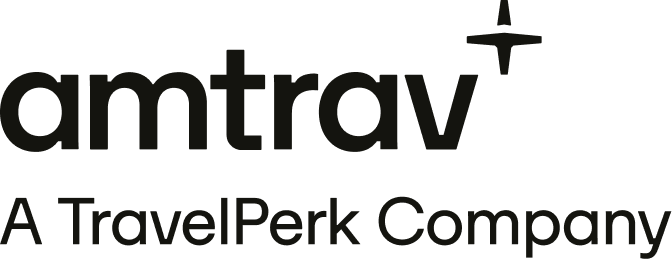As a travel manager, you’re responsible for planning business trips that are both efficient and cost-effective. But how do you measure the success of your efforts? Most employers want to know that their dollars are well-spent when it comes to corporate travel—in other words, they need tangible proof of return on investment (ROI).
Easier said than done, right? There’s no universal way currently to measure the inputs and outputs of travel, especially in cases where travel is mandatory but may not necessarily be the driver of revenue.
Either way, travel managers still need to measure travel expenses effectively and report the best ROI possible. Let’s dig in on how to do that.
1. Analyze Options and Weigh Travel Alternatives
Without mincing words, corporate travel budgets are likely to be much smaller in the future thanks to the mainstreaming of technologies like video conferencing and remote workspaces. This translates into a couple of key points when it comes to showing ROI:
First, controlling costs with the use of managed corporate travel policies will be essential in order to reduce overhead costs
Second, each meeting/trip/event in the future will need to be impactful and necessary (not necessarily a driver of revenue, though)
Some of you may be scoffing at the first point, right? "Of course, AmTrav wants me to opt-in to a managed travel program. They manage travel!"
You got us a little bit. Yes, we do want you to partner with us so we can make you more productive and happier than you've ever been with your travel program, but that's not why we recommend a managed travel partner. The reality is that with budgets on track to become so much smaller and with the demand for trackable ROI increasing, your program simply can't afford costly booking errors and weak travel experiences.
Do you have a strategy in place to manage unused tickets?
Do you have real-time data that can allow you to make adjustments on the fly?
What’s your plan for helping travelers through tight spots on the road? Is it expensive in time or money? Both?
These are the things that a managed travel provider can help you with, among many others.
Okay, so what's the next step, regardless? We recommend that you analyze all of your available options for trips and weigh them against one another. It's important to review all current travel policies and consider whether or not certain trips need to be approved or if they can be done via video conferencing instead.
As we mentioned, video conferencing is here to stay, and it can definitely manage a wide array of business functions, and it certainly helps with t and e. Learning to utilize it effectively and knowing when to get everyone together face-to-face is going to become a highly desirable skill.
Also, don't forget to compare all the different possible routes (airline, train, rental car, etc.) and destinations in order to find the most cost-effective options. Business travel software is going to help you greatly there. Travelers are still going to expect the same, if not higher, quality experiences on cramped budgets, so be aware of that when creating a plan if you’re unmanaged.
2. Track Details with Travel Expense Policy Reports
Tracking travel expenses is an essential part of any business's success, obviously. A well-designed travel expense report can help you to manage your corporate travel and expenses policy better while also providing invaluable data that can be used to guide your future strategy. But how do you ensure that employees will fill out the reports in detail?
Many companies still rely on paper expense reports to capture data from their employees’ travels (don't worry, if this describes your t&e management, we won't tell anyone).
While they are an effective way to capture all the necessary details, they require tedious manual data entry later on. This is especially problematic if the forms are overly mundane or difficult to understand, as employees might not fill them out as accurately.
Fortunately, there are now tons of excellent business travel software (knock knock, hey, it’s AmTrav with Mr. opportunity here) available that provide a quick and efficient way of capturing travel expenses without the need for duplicate data entry. These apps allow users to quickly input their expenses into pre-set categories, making it easy for them to track their spending and submit their reports in a timely manner.
Naturally, an effective reporting tool is a major part of detailing and proving ROI.
By analyzing collected data in real time, you can gain valuable insights into where money is being spent and identify areas where you could save money in the future. You may find ways to optimize your existing processes so that they are more efficient and cost-effective in the long run. Furthermore, if any discrepancies arise during analysis, you can easily backtrack through each employee’s report and pinpoint exactly where it occurred. Pretty sweet, huh?
3. Post-Trip Evaluation
Post-trip evaluation is an important process for any business that involves travel. Evaluating a trip helps to assess the overall success of the journey, both financially and experientially. Analyzing cost reports, employee surveys, and other data points can help inform the decision-making process and guide future travel decisions.
It’s not enough to simply reduce costs—the well-being of your employees matters in ROI, too! A pleasant and hassle-free travel experience can help with employee retention as well as ensure that your employees are firing on all cylinders when they arrive at their destination. Here we will discuss how business travel software can help take some of the stress out of the post-trip evaluation process.
Analyzing Cost Reports & Employee Feedback
Once you’ve gathered all the necessary data from your handy reporting tool, it’s time to analyze it. Quick access to cost reports allows you to see exactly where money was spent on each trip and compare those numbers against past trips or against budgets set prior to departure. As shown above, this helps inform decisions around budgeting for future trips, allowing you to better manage your t and e spend across different departments or offices if needed.
Analyzing employee feedback can give you valuable insight into what works—and what doesn’t—when it comes to travel experiences, allowing you to make improvements as needed that will benefit both employees and the company as a whole.
A not-so-secret hack here is designing post-trip surveys to get feedback directly from travelers on how things went. Some savvy travelers may even be able to point out useful ideas of resources to help you save more.
The Wrap Up
Managing business travel expenses is an essential part of any successful business. By having the right tools in place and taking the time to evaluate the data you’ve gathered from each trip, you can ensure that accurate insights inform your budgeting decisions.
With apps like AmTrav's expense reporting tool, comparison booking tool, and around-the-clock stateside support, you can rest assured that your cost analysis will be as precise as possible. All these steps together will help your company save money while preparing employees for a safe and enjoyable experience on every trip they take!
If you want to take better control of your companies t and e, submit the form below, and we'll answer any questions you might have about working with a managed provider or switching from an ineffective one.
Admin





